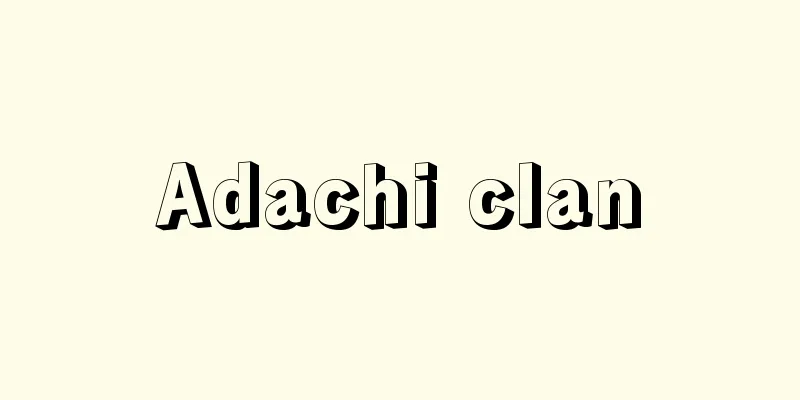Labor Camp - Ninsokuyoseba

|
During the Edo period, this facility housed homeless people and ex-convicts with no one to claim them, and offered them employment and rehabilitation. It was originally called the Kayakukata Labor Camp, or simply the Labor Camp. A similar facility, the Homeless Care Home, was established in Shigemori-cho, Fukagawa, in 1780 (An'ei 9), but it was closed in 1786 (Tenmei 6) due to a succession of fugitives. However, after the Tenmei famine, the number of homeless people in Edo increased dramatically, once again becoming a social problem, so Matsudaira Sadanobu, a senior councilor, accepted the suggestion of Hasegawa Heizo, an officer in charge of arson and thief control, and established the Labor Camp in 1790 (Kansei 2). The site was prepared by leveling 49,000m2 of the reed marshland of Teppozumukojima, located between Ishikawajima and Tsukudajima at the mouth of the Sumida River. In 1792, a magistrate was appointed to improve management, and the neighboring residence of Ishikawa Osumi no Kami was acquired, with the 49,000m2 site incorporated into the auxiliary land of the yokoba. There was a craft workshop within the yokoba where inmates were made to work in carpentry, joinery, lacquering, papermaking, rice pounding, oil squeezing, oyster shell ash production, charcoal briquettes making, straw crafts, and more. They were paid wages for these tasks, but one third of them was forced to be saved and given to them as a fund for the restoration of their livelihoods when they were released. The number of inmates was 140-150 until the Bunka-Bunsei period (1804-1830), and rose to 400-600 from the Tenpo period (1830-1844) onwards. Inmates were provided with clothes dyed persimmon green with white polka dots, and lectures on Shingaku were held by lecturers such as Oshima Yurin (1755-1836) to educate the laborers. Besides Edo, labor camps were established in Kamigo Village, Hitachi Province (Kamigo, Tsukuba City, Ibaraki Prefecture), Nagasaki, Hakodate, Yokosuka, and other places, and like Edo, all of these camps combined preventive detention as a measure to protect public order and the social policy of vocational rehabilitation. The Edo Labor Camp became Ishikawajima Doba after the Meiji Restoration, and was renamed several times after that, becoming Ishikawajima Prison Station under the jurisdiction of the Metropolitan Police Department in 1877 (Meiji 10). The remains were demolished in 1895, but the system was continued by Sugamo Prison and then Fuchu Prison. [Akira Baba] "The Laborers' Homes Memorial Association, ed., The History of Laborers' Homes - The Origin of Japan's Imprisonment and Security Measures" (1974, Sobunsha)" ▽ "Hasegawa Heizo - His Life and Laborers' Homes" by Takikawa Masajiro (1975, Asahi Shimbun) Source: Shogakukan Encyclopedia Nipponica About Encyclopedia Nipponica Information | Legend |
|
江戸時代、無宿人や引取人のいない刑余者を留置し、授産更生を図った施設。初め加役方(かやくかた)人足寄場、また略して単に寄場とも称された。同様の施設は、1780年(安永9)に深川茂森(しげもり)町に無宿養育所が建てられたが、逃亡者が相次ぎ、86年(天明6)に廃止されている。しかし、天明(てんめい)の飢饉(ききん)以降、江戸に無宿人が激増してふたたび社会問題化したため、老中松平定信(さだのぶ)は火附(ひつけ)盗賊改(あらため)役長谷川平蔵(はせがわへいぞう)の建言をいれ、1790年(寛政2)に人足寄場を設置した。その場所には、隅田(すみだ)川河口の石川島と佃(つくだ)島の中間にある鉄砲洲向島(てっぽうずむこうじま)の芦(あし)沼1万6030坪の沮洳(そじょ)地を整地してあてた。1792年には、寄場奉行(ぶぎょう)を設置して管理機構を整備し、また、隣接する石川大隅守(おおすみのかみ)屋敷を上地(あげち)して、その跡地1万6700坪を寄場付属地に編入している。寄場内には手業場があり、収容者に大工、建具、塗物、紙漉(す)きや米搗(つ)き、油絞り、牡蠣殻灰(かきがらはい)製造、炭団(たどん)作り、藁(わら)細工などに従事させた。これらの作業に対しては賃金が支払われたが、その3分の1は強制的に積み立てさせ、出所時に生業復興資金として渡した。収容員数は、文化・文政(ぶんかぶんせい)期(1804~30)まで140~150人、天保(てんぽう)期(1830~44)以降は400~600人に上った。収容者には、柿(かき)色に水玉模様を白く染め抜いた衣類が支給され、また、人足の教化のために大島有隣(おおしまうりん)(1755―1836)らを講師として心学の道話を行っている。江戸以外にも、常陸(ひたち)国上郷(かみごう)村(茨城県つくば市上郷)、長崎、箱館(はこだて)、横須賀などに人足寄場が設置されており、いずれも江戸同様、予防拘禁による治安対策と授産更生という社会政策を兼ねるものであった。江戸の人足寄場は、明治維新により石川島徒場となり、その後幾度か改称されて、1877年(明治10)警視庁管轄下の石川島監獄署となった。遺構は95年に取り壊されたが、その制度は、巣鴨(すがも)監獄を経て府中刑務所に引き継がれた。 [馬場 章] 『人足寄場顕彰会編『人足寄場史――我が国自由刑・保安処分の源流』(1974・創文社)』▽『瀧川政次郎著『長谷川平蔵――その生涯と人足寄場』(1975・朝日新聞社)』 出典 小学館 日本大百科全書(ニッポニカ)日本大百科全書(ニッポニカ)について 情報 | 凡例 |
<<: Cognition - Ninchi (English spelling) cognition
Recommend
Characters - Moji
Also known as "monji," it is a system o...
Chuya Marubashi
A ronin (masterless samurai) from the Edo period....
Namerikawa [city] - Namerikawa
A city facing Toyama Bay in northern Toyama Prefec...
Karuna - Karuna
...In Ladakh, on religious festival days, a group...
Fu - Fu
It is a processed food that uses wheat flour prot...
EBF - E.B.F.
《 English breakfast 》⇒English breakfast Source: Ab...
"Utaandon" - Utaandon
...He is known as a "pessimistic melodrama w...
Yellow lily - Yellow lily
…The maidenhair fern is a limestone plant found w...
Allergic rhinitis
What kind of disease is it? <Sneezing, runny n...
Akifurakia - Akifurakia
...A marine fish of the Scombridae family in the ...
Zemlinsky, Alexander
Born October 14, 1871 in Vienna, Austria [Died] Ma...
House of Bonaparte - Bonaparte (English spelling)
The family from which French Emperors Napoleon I ...
Mortar - Crow
A threshing tool from the Edo period, also called ...
Polariscope - Polariscope
A general term for a device that combines a polari...
Academie des jeux floraux
…The academy as an academic organization can be t...




![Satosho [town] - Satosho](/upload/images/67cbacfd8f7b6.webp)




